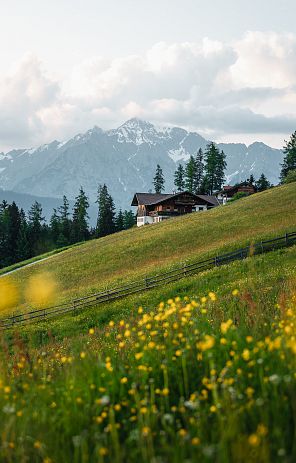Jakob Stainer. Violin maker from Absam
Jakob Stainer is one of many well-known personalities in the Hall-Wattens region. We know little about Jacob Stainer's life - the earliest written document, a banal invoice for the repair of a violin, dates back to 1644. The large gaps in his biography were filled with numerous legends in the 19th century - Stainer was nationalized as the "father of the German violin".
He was born the son of a miner. He enjoyed his education from 1626 to 1630, possibly including Latin lessons from the schoolmaster of Absam. His later letters and writings indicate a solid education and knowledge of the Italian language. It is assumed that he may have worked as a choirboy in the noble ladies' convent in Hall in Tyrol or at the court in Innsbruck and completed a carpentry apprenticeship at the same time. Traditionally, prospective violin makers, unless they were the sons of master craftsmen, had to have completed a carpentry apprenticeship beforehand.
Jakob Stainer received his training as a violin maker between 1630 and 1644, although Innsbruck and Füssen can be ruled out as training centers due to the unrest in connection with the Thirty Years' War. There are many indications that he received his training in Italy, possibly in Venice. The five years of apprenticeship were followed by several years of travel, some of which may have taken place in Amati's workshop in Cremona.
From 1644, Jakob Stainer began his independent career as a violin maker. He sold his instruments to monasteries and courts in Salzburg, Innsbruck, Munich, Venice, Kirchdorf, Bolzano, Nuremberg, Kremsier and Merano. He did not take on any apprentices, which meant that his knowledge of violin making was not passed on.
On November 26, 1645, Stainer married Margareta Holzhammer in Absam. From then on, he worked mainly as a violin maker in Absam, but often traveled to sell instruments or acquire materials. In 1646, he delivered seven instruments to the Innsbruck court. The following year he stayed in Kirchdorf (Upper Austria) and left behind debts, which led to a court hearing in 1667. In 1649, Stainer worked as an alto and assistant to the parish choir in Merano, and three years later he received another commission for the Innsbruck court.
In 1656, Stainer acquired a house in Absamer Oberdorf (today the "Stainer House"). Two years later, Archduke Ferdinand Karl awarded him the title of "archducal servant", which expired with the archduke's death in 1662. He received the title of "Imperial Servant" from Emperor Leopold I in 1669.
From 1668, Stainer was involved in a dispute with the church authorities over the possession of "heretical books". He was summoned to Brixen, the seat of the prince-bishop. As he did not appear, a house search and secret inquisition were ordered. A year later, Stainer was imprisoned in Innsbruck for "worried flight". From 1670 to 1679, he nevertheless received commissions from Merano, Salzburg, Schwaz, Munich and Nuremberg.
From 1680, Stainer suffered increasingly from depression. In late October or early November 1683, he died in Absam - not impoverished, according to the latest research, but wealthy - but in a state of mental derangement.
The special feature of Stainer violins
His instruments reveal little of his concept when viewed from the outside. Even the fact that all of his ceilings are "high vaulted" only vaguely describes what Jacob Stainer's idea was all about.
Border crosser
However, one feature that distinguishes Stainer's instruments from those from Cremona (Amati, Stradivari, Guaneri), for example, is the varying thickness of the wood in his tops and backs - something that you would never be able to see in instruments displayed in showcases.
Rudolf Hopfner, the director of the collection of old musical instruments at the Kunsthistorisches Museum in Vienna, writes: "In the classical Italian works, especially those by Stradivari, the thickness of the top is almost the same in the middle and at the edges. This is not the case with Stainer, who juxtaposes a thicker center [...] with a thin edge. With thicknesses of less than two millimetres, it reaches the stability limit of the spruce wood in the coving area. Physically speaking, this concept is similar to a loudspeaker membrane with a flexible suspension at the edge."
Learn more about Jakob Stainer
Both the Absam Municipal Museum and the violin maker Arnold Posch in Hall in Tirol have interesting information about Stainer and the art of violin making.



